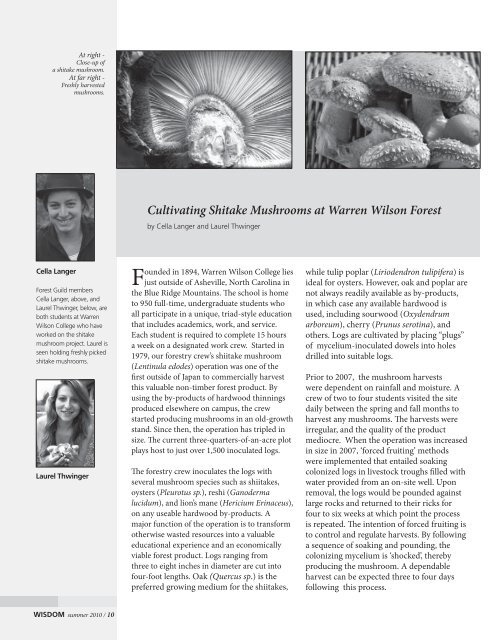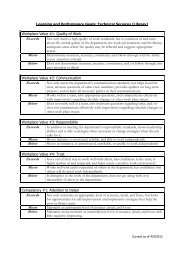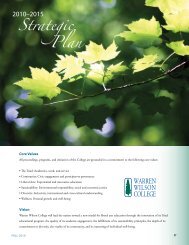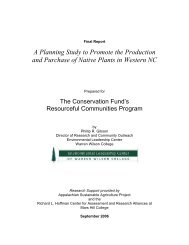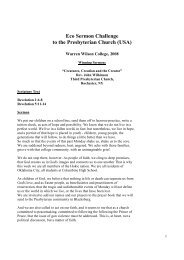Ecosystem Services - Forest Guild
Ecosystem Services - Forest Guild
Ecosystem Services - Forest Guild
- No tags were found...
You also want an ePaper? Increase the reach of your titles
YUMPU automatically turns print PDFs into web optimized ePapers that Google loves.
At right -Close-up ofa shitake mushroom.At far right -Freshly harvestedmushrooms.Cultivating Shitake Mushrooms at Warren Wilson <strong>Forest</strong>by Cella Langer and Laurel ThwingerCella Langer<strong>Forest</strong> <strong>Guild</strong> membersCella Langer, above, andLaurel Thwinger, below, areboth students at WarrenWilson College who haveworked on the shitakemushroom project. Laurel isseen holding freshly pickedshitake mushrooms.Laurel Thwingerounded in 1894, Warren Wilson College liesF just outside of Asheville, North Carolina inthe Blue Ridge Mountains. The school is hometo 950 full-time, undergraduate students whoall participate in a unique, triad-style educationthat includes academics, work, and service.Each student is required to complete 15 hoursa week on a designated work crew. Started in1979, our forestry crew’s shiitake mushroom(Lentinula edodes) operation was one of thefirst outside of Japan to commercially harvestthis valuable non-timber forest product. Byusing the by-products of hardwood thinningsproduced elsewhere on campus, the crewstarted producing mushrooms in an old-growthstand. Since then, the operation has tripled insize. The current three-quarters-of-an-acre plotplays host to just over 1,500 inoculated logs.The forestry crew inoculates the logs withseveral mushroom species such as shiitakes,oysters (Pleurotus sp.), reshi (Ganodermalucidum), and lion’s mane (Hericium Erinaceus),on any useable hardwood by-products. Amajor function of the operation is to transformotherwise wasted resources into a valuableeducational experience and an economicallyviable forest product. Logs ranging fromthree to eight inches in diameter are cut intofour-foot lengths. Oak (Quercus sp.) is thepreferred growing medium for the shiitakes,while tulip poplar (Liriodendron tulipifera) isideal for oysters. However, oak and poplar arenot always readily available as by-products,in which case any available hardwood isused, including sourwood (Oxydendrumarboreum), cherry (Prunus serotina), andothers. Logs are cultivated by placing “plugs”of mycelium-inoculated dowels into holesdrilled into suitable logs.Prior to 2007, the mushroom harvestswere dependent on rainfall and moisture. Acrew of two to four students visited the sitedaily between the spring and fall months toharvest any mushrooms. The harvests wereirregular, and the quality of the productmediocre. When the operation was increasedin size in 2007, ‘forced fruiting’ methodswere implemented that entailed soakingcolonized logs in livestock troughs filled withwater provided from an on-site well. Uponremoval, the logs would be pounded againstlarge rocks and returned to their ricks forfour to six weeks at which point the processis repeated. The intention of forced fruiting isto control and regulate harvests. By followinga sequence of soaking and pounding, thecolonizing mycelium is ‘shocked’, therebyproducing the mushroom. A dependableharvest can be expected three to four daysfollowing this process.WISDOM summer 2010 / 10


